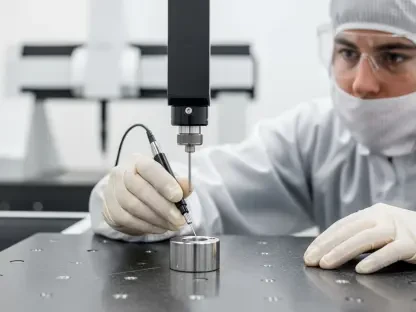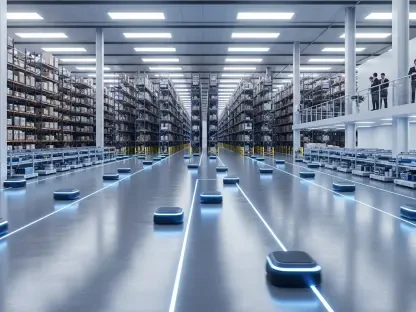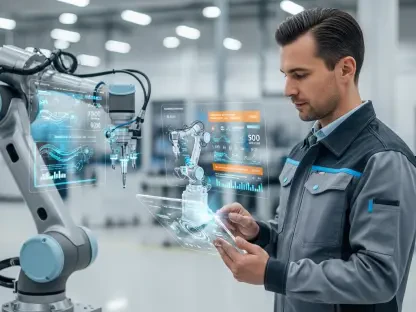In the ever-evolving landscape of pharmaceuticals, pharmacovigilance (PV) stands as a cornerstone of patient safety, tasked with the critical mission of monitoring and assessing adverse events (AEs) linked to drugs, while traditional approaches struggle under escalating workloads and regulatory pressures. Manual processes drain resources and divert skilled scientists from impactful work, but artificial intelligence (AI) emerges as a transformative force, poised to revolutionize how the industry safeguards patient health. By automating tedious tasks and sharpening the detection of potential risks, AI offers a lifeline to an overburdened system while addressing the complexities of modern therapies. This shift is not merely about keeping up with demands but about redefining the standards of safety in a world where innovation often outpaces understanding.
The urgency of this transformation becomes even clearer with the rise of groundbreaking drugs, such as mRNA-based cancer treatments and GLP-1 receptor agonists for weight loss. These therapies, while offering immense promise, carry unknown risks that demand heightened vigilance. AI’s ability to process massive datasets and uncover subtle safety signals positions it as an indispensable ally in navigating this new terrain. Beyond operational relief, the technology is reshaping PV into a strategic partner in drug development, aligning patient safety with broader industry goals. As the stakes grow higher, the adoption of AI in PV is no longer optional but essential for staying ahead of emerging challenges.
AI as a Solution to Operational Challenges
Streamlining Routine Tasks
The grind of manually tracking and processing adverse events has long plagued PV teams, turning much of their work into a repetitive compliance exercise, especially for drugs with established safety profiles. This labor-intensive process not only inflates operational costs but also pulls highly trained scientists away from innovative, value-driven tasks. AI steps in as a powerful remedy, automating these mundane activities with speed and precision. By handling data entry, case categorization, and initial assessments, AI frees up human resources for more complex analysis and strategic oversight. This shift promises significant cost savings while enhancing job satisfaction among professionals who can now focus on areas where their expertise truly shines. The ripple effect is a more efficient PV system that operates without the constant strain of routine overload, setting a foundation for broader improvements in safety monitoring.
Moreover, the impact of AI on operational efficiency extends beyond mere time-saving. It introduces consistency and accuracy that manual processes often lack, reducing the risk of human error in AE reporting. For pharmaceutical companies drowning in data from diverse sources, AI systems can standardize workflows, ensuring that no critical detail slips through the cracks. This reliability is crucial when regulatory compliance is non-negotiable, and even minor oversights can lead to significant repercussions. Additionally, the scalability of AI allows companies to manage growing caseloads without a proportional increase in staff or budget. As the volume of AEs continues to rise with expanding drug portfolios, AI’s role in maintaining operational stability becomes a competitive advantage, enabling firms to meet demands without sacrificing quality or speed.
Optimizing Resource Allocation
Beyond automating routine tasks, AI offers a deeper benefit by optimizing how resources are allocated within PV departments. Traditionally, a significant portion of time and budget is consumed by low-value activities, leaving little room for proactive safety initiatives. AI-driven tools can prioritize cases based on severity or novelty, ensuring that critical issues receive immediate attention while less urgent matters are handled systematically. This intelligent triaging not only streamlines workflows but also empowers teams to focus on emerging risks or complex cases that require human judgment. The result is a more balanced distribution of effort, where resources align with the highest priorities for patient safety rather than being spread thin across repetitive tasks.
Furthermore, the financial implications of resource optimization through AI cannot be overstated. Pharmaceutical companies often face tight margins in PV due to the high costs of manual processing and compliance demands. By integrating AI, firms can reduce overhead costs associated with large teams dedicated to data handling, redirecting those savings into research, development, or enhanced monitoring programs. This reallocation also fosters a culture of innovation within PV, as teams previously bogged down by paperwork can now contribute to strategic goals. As AI continues to refine its ability to predict workload spikes or identify bottlenecks, its role in resource management evolves from a supportive tool to a cornerstone of fiscal and operational planning in PV, ensuring sustainability in a high-stakes field.
Addressing the Complexity of New Therapies
Enhanced Monitoring for High-Risk Drugs
The pharmaceutical landscape is witnessing an unprecedented wave of innovation with therapies like mRNA-based cancer treatments and GLP-1 receptor agonists for weight loss, each carrying unique and often unpredictable risk profiles. These novel drugs, while transformative, challenge traditional PV systems with the potential for unforeseen side effects, as seen in reports of pancreatic complications linked to certain weight-loss injections. AI proves invaluable here, equipped to handle enormous data volumes from clinical trials, real-world evidence, and patient reports to detect subtle patterns or anomalies that might escape human reviewers. This advanced monitoring capability ensures that potential risks are identified early, allowing for swift regulatory or clinical responses to protect patient health in an era of rapid therapeutic advancement.
Equally important is AI’s role in adapting to the dynamic nature of high-risk therapies as they move from development to market. Unlike established drugs with well-documented safety data, new treatments often reveal risks only after widespread use, necessitating real-time vigilance. AI systems can continuously analyze incoming data streams, flagging unusual trends or correlations that signal emerging issues. This proactive approach contrasts sharply with the reactive nature of traditional PV, where delays in identifying problems can have serious consequences. By integrating AI, companies can meet the stringent regulatory expectations surrounding innovative drugs while maintaining public trust. The technology’s precision in parsing complex datasets positions it as a critical safeguard against the uncertainties inherent in cutting-edge medical advancements.
Supporting Regulatory Compliance
Navigating the regulatory landscape for novel therapies presents another layer of complexity, as agencies demand rigorous monitoring and detailed reporting to approve and sustain these drugs on the market. AI enhances compliance by automating the generation of accurate, comprehensive reports that meet global standards, reducing the burden on PV teams. It can cross-reference AE data with regulatory guidelines to ensure nothing is overlooked, minimizing the risk of penalties or delays in drug approvals. This capability is particularly vital for therapies with high-risk profiles, where scrutiny from bodies like the US FDA is intense. AI’s efficiency in documentation and data validation helps companies stay ahead of compliance curves, even as requirements evolve with each new therapeutic breakthrough.
Additionally, AI supports a more collaborative relationship between pharmaceutical firms and regulators by providing transparent, data-driven insights into safety profiles. When unexpected side effects arise, as with certain innovative treatments, AI can rapidly compile evidence to inform risk assessments or mitigation strategies, facilitating faster communication with oversight bodies. This responsiveness not only aids in maintaining compliance but also demonstrates a commitment to patient safety, a priority shared by regulators and industry alike. Furthermore, the technology can anticipate regulatory shifts by analyzing trends in enforcement or policy changes, preparing companies for future demands. As the complexity of new therapies continues to challenge existing frameworks, AI stands as a bridge, ensuring that compliance efforts are both robust and adaptable to the unique risks these drugs present.
Strategic Elevation of Pharmacovigilance
From Compliance to Innovation
Artificial intelligence is catalyzing a profound shift in pharmacovigilance, moving it beyond a mere regulatory checkbox to a strategic pillar in drug development and lifecycle management. Historically viewed as a reactive function focused on compliance, PV is now leveraging AI to integrate risk insights into broader business strategies. By analyzing vast datasets for patterns that predict safety concerns, AI empowers PV teams to influence product design, clinical trial protocols, and post-market strategies. This forward-thinking approach aligns patient safety with corporate innovation, ensuring that potential issues are addressed before they escalate. The transformation marks a new era where PV contributes directly to a company’s competitive edge and long-term success.
This strategic elevation also reshapes how PV interacts with other departments, fostering cross-functional collaboration. AI-driven insights allow safety teams to work closely with research and development, marketing, and executive leadership to make informed decisions about drug portfolios. For instance, identifying a recurring AE pattern early can guide modifications in drug formulation or dosing recommendations, enhancing both safety and efficacy. According to US FDA data, AI has already improved potential drug risk detection by over 25%, underscoring its value in driving proactive measures. This data-centric approach not only mitigates risks but also positions PV as a driver of innovation, where safety considerations fuel advancements rather than hinder them. The result is a more integrated, impactful role for PV within the pharmaceutical ecosystem.
Building a Proactive Safety Culture
AI’s influence extends to cultivating a proactive safety culture across the industry, redefining how companies approach patient well-being. By enabling real-time risk detection and predictive analytics, AI shifts the focus from responding to adverse events after they occur to anticipating and preventing them. This cultural change encourages pharmaceutical firms to embed safety considerations into every stage of a drug’s journey, from initial research to post-market surveillance. PV teams, equipped with AI tools, become advocates for preemptive action, identifying vulnerabilities in therapies before they impact patients. Such foresight strengthens trust among stakeholders, including regulators, healthcare providers, and the public, who increasingly demand accountability in drug safety.
Moreover, fostering a proactive safety culture through AI has implications for industry reputation and sustainability. Companies that prioritize early risk identification and mitigation are better positioned to avoid costly recalls, legal challenges, or public backlash stemming from safety failures. AI facilitates this by providing actionable insights that guide risk management plans, ensuring that safety remains a core value rather than an afterthought. This cultural shift also attracts talent and investment, as firms demonstrating a commitment to cutting-edge safety practices stand out in a competitive market. As AI continues to refine its predictive capabilities, it solidifies PV’s role as a guardian of patient health, driving an industry-wide movement toward prevention over reaction, with lasting benefits for all involved.
Customizing AI Adoption for Diverse Needs
Tailored Implementation Across Company Sizes
Adopting AI in pharmacovigilance requires a nuanced approach, as the needs and capabilities of pharmaceutical companies vary widely based on their size and portfolio complexity. Large firms, often managing extensive AE caseloads across diverse drug lines, stand to gain significantly from full-scale AI automation. Whether implemented in-house or through partnerships with tech providers, AI can handle the sheer volume of data these companies process daily. However, challenges like integrating with outdated safety databases can slow progress. Solutions such as intuitive user interfaces and wrap-around software help bridge this gap, ensuring seamless adoption without disrupting existing systems. This tailored strategy allows major players to harness AI’s full potential while navigating their unique operational landscapes.
In contrast, mid-sized companies with more limited resources can take a phased approach to AI integration, starting with foundational steps like digitizing inbound AE case capture. This initial focus builds a robust data infrastructure that paves the way for broader AI adoption over time, without the immediate need for massive investment or overhaul. Such incremental implementation ensures that smaller firms aren’t left behind in the technological shift, gaining access to AI’s benefits at a pace that matches their capacity. Regardless of scale, customization remains key—each company must assess its specific PV demands, infrastructure, and long-term goals to craft an AI strategy that fits. This flexibility democratizes access to transformative tools, ensuring that patient safety advancements through AI are achievable across the industry spectrum, from global giants to emerging players.
Overcoming Integration Challenges
The journey to AI-driven PV is not without obstacles, particularly when it comes to integrating new technologies with legacy systems that many pharmaceutical companies still rely on. These older databases, often rigid and incompatible with modern AI tools, pose a significant barrier to seamless adoption. However, innovative workarounds like wrap-around software can create a bridge between old and new, allowing AI to operate alongside existing frameworks without requiring a complete system replacement. Intuitive user interfaces also play a crucial role, simplifying the transition for staff accustomed to traditional workflows. By addressing these technical hurdles, companies can mitigate disruption and accelerate the rollout of AI solutions in their PV operations.
Additionally, integration challenges extend beyond technology to include organizational readiness and training. Staff may initially resist AI adoption due to unfamiliarity or concerns about job displacement, necessitating a focus on change management. Comprehensive training programs that highlight AI as a supportive tool—rather than a replacement for human expertise—can ease this transition, building confidence in the technology. Furthermore, pilot programs that test AI on a small scale before full deployment help identify potential issues and refine implementation strategies. By tackling both technical and cultural barriers, companies ensure that AI integration strengthens PV without alienating the teams responsible for its success. This balanced approach paves the way for a smoother evolution, where technology and human insight work in tandem to enhance patient safety outcomes.









